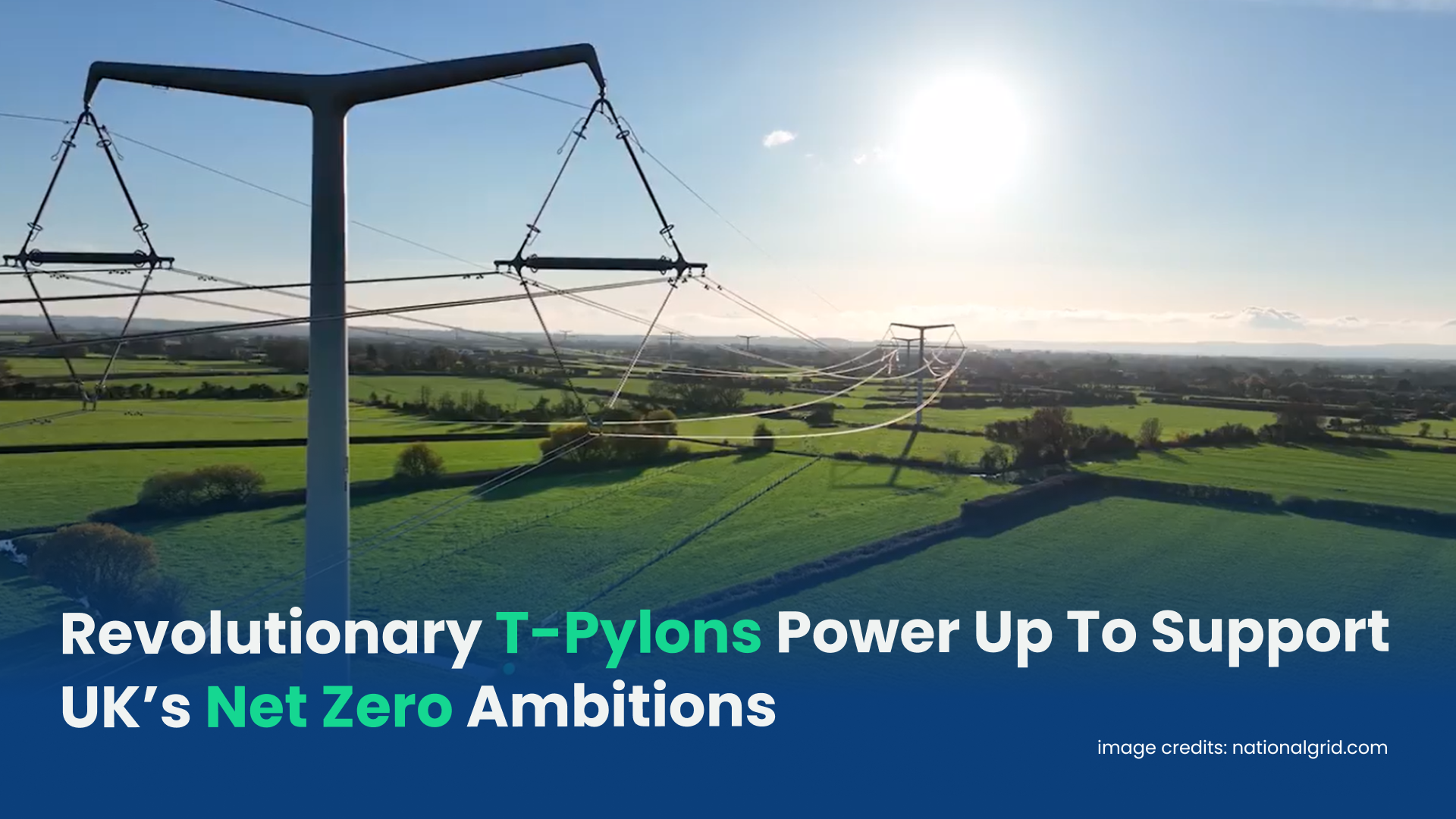21 March 2023: The National Grid has energised 36 T-pylons that are situated in Somerset between Bridgewater and Loxton. These T-pylons are unique and are reported to be the world’s first of their kind, to be introduced in the United Kingdom.
Chosen from a pool of more than 250 designs during an international competition in 2011, the T-pylons are made up of a solitary pole connected to arms in the shape of a cross and are approximately 33% shorter than conventional high-voltage pylons, with a minimal impact on the ground. With the aim of achieving net zero emissions, the competition sought to identify a new energy infrastructure design that would have minimal impact on the local environment and surroundings.
The T-pylons and a recently-built electricity substation in Sandford, along with a 8.5km of underground cables running through the Mendip Hills, will now carry electricity up to 40,000 volts.
The construction of the pylons started in September 2021 as a component of the Hinkley Connection Project, which has a budget of £900 million. This project aims to create a 57km long high-voltage power line that will link low carbon energy to 6 million households and businesses.
In a recent press release published by National Grid, Steven Haskayne, project director for National Grid said, “We’re extremely proud to have reached this significant milestone on the Hinkley Connection Project”.
“The T-pylons are now reinforcing and strengthening the network in the South West and are ready for the connection of low carbon energy. This new design forms part of our significant investment in the network in England and Wales, adding capacity onto the grid to deliver low carbon electricity to millions of people across the UK to use for years to come, and helping the UK’s journey towards net zero,” he further added.
The energisation of the T-pylons represents a major achievement in the UK's energy infrastructure. As the world continues to face the urgent threat of climate change, investments in sustainable energy infrastructure will be critical in ensuring a sustainable future for generations to come.

